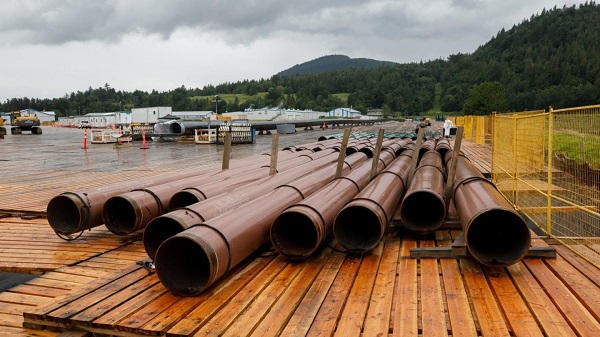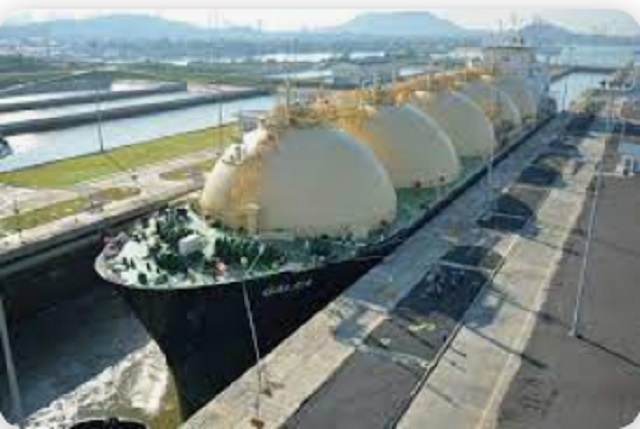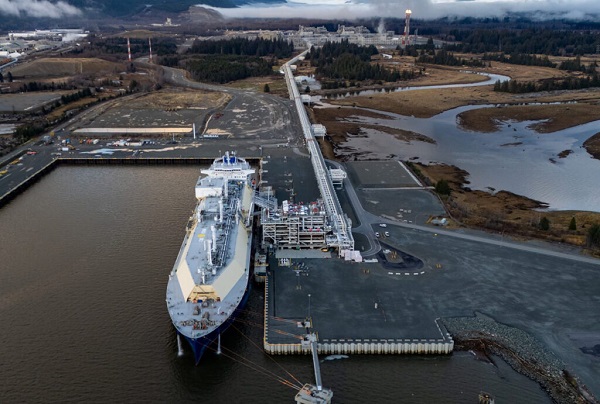Alberta
Ottawa’s bold energy promises face skepticism in Alberta

This article supplied by Troy Media.
 By Rashid Husain Syed
By Rashid Husain Syed
Carney vows action but Alberta wants to see results and the repeal of Trudeau-era regulations
Ottawa is promising speed, Alberta is demanding proof, and the future of Canada’s energy industry hangs in the balance. A change in government hasn’t changed the tone—mistrust still defines the relationship between Ottawa and the oil-rich West. That tension is far from resolved, and any reconciliation may still be weeks or months away.
Prime Minister Mark Carney has pledged to “build big, build bold, and build now.” In recent days, new federal Energy Minister Tim Hodgson has been repeating the prime minister’s campaign promise to fast-track projects of national interest, including major energy projects. “Canada will no longer be defined by delay. We will be defined by delivery,” Hodgson underlined in a speech at the Calgary Chamber of Commerce last Friday, pledging to see through the prime minister’s vision to transform “Canada into a conventional and clean energy and natural resources superpower.”
Hodgson made it clear Ottawa is in a hurry. “No more five-year reviews. Decisions will come in two years for all projects. This is not a time for half measures or slow steps,” he said.
In a post-address interview with chamber CEO Deborah Yedlin, Hodgson emphasized his focus on “quick wins” in the energy sector. He reiterated support for the proposed new West to East pipeline, a crosscountry project intended to move Alberta oil and gas to refineries and ports in Eastern Canada, and promised new infrastructure to get Canadian energy “to trusted allies” outside the U.S.
But while pursuing energy infrastructure at speed, Hodgson asserted that limiting greenhouse gas emissions remains a priority. The Carney government sees crude and natural gas exports as complementary to climate goals, not in conflict. This dual-track approach—clean and conventional energy moving forward in tandem—reflects the government’s broader energy vision.
Many in the Calgary business community responded with cautious optimism. Some were encouraged that Calgary was Hodgson’s first major stop. Others were skeptical. “There is some repair and trust-building that has to happen given the challenges of the last 10 years, I would argue,” Yedlin later told reporters, emphasizing that the real test will be reducing regulatory burdens on major projects.
Alberta Premier Danielle Smith, building pressure on Ottawa, was quoted in media reports as saying it’s “go time” for Mark Carney.
“Enough with the foot-dragging. Enough with trying to maintain the same failed policies of the last 10 years. Let’s get going,” says Smith. “Look. I was told to give this guy a chance. I’m giving him a chance. Now I’m telling him: Don’t blow it.”
Her demands are clear: scrap the Liberal No More Pipelines law—formally known as the Impact Assessment Act—along with the cap on oil and gas emissions, the net-zero electricity regulations and the tanker ban off the west coast.
That’s just part of the list. But as Smith puts it, “So far I’m not seeing anything to suggest there’s been a true change of heart.”
“I’ve got a mandate to develop our economy and exercise our constitutional rights, and I’m going to do that, one way or the other,” she emphasized, almost threateningly.
For Canadians, what’s at stake is more than pipeline routes. The outcome of this standoff could shape national energy prices, affect investor confidence in Canadian infrastructure and resource sectors, influence emissions targets and test the limits of federal-provincial cooperation.
Carney and Hodgson face more than infrastructure challenges—they must bridge a widening political divide. The clock is ticking.
Toronto-based Rashid Husain Syed is a highly regarded analyst specializing in energy and politics, particularly in the Middle East. In addition to his contributions to local and international newspapers, Rashid frequently lends his expertise as a speaker at global conferences. Organizations such as the Department of Energy in Washington and the International Energy Agency in Paris have sought his insights on global energy matters
Troy Media empowers Canadian community news outlets by providing independent, insightful analysis and commentary. Our mission is to support local media in helping Canadians stay informed and engaged by delivering reliable content that strengthens community connections and deepens understanding across the country.
Alberta
The case for expanding Canada’s energy exports

From the Canadian Energy Centre
For Canada, the path to a stronger economy — and stronger global influence — runs through energy.
That’s the view of David Detomasi, a professor at the Smith School of Business at Queen’s University.
Detomasi, author of Profits and Power: Navigating the Politics and Geopolitics of Oil, argues that there is a moral case for developing Canada’s energy, both for Canadians and the world.
CEC: What does being an energy superpower mean to you?
DD: It means Canada is strong enough to affect the system as a whole by its choices.
There is something really valuable about Canada’s — and Alberta’s — way of producing carbon energy that goes beyond just the monetary rewards.
CEC: You talk about the moral case for developing Canada’s energy. What do you mean?
DD: I think the default assumption in public rhetoric is that the environmental movement is the only voice speaking for the moral betterment of the world. That needs to be challenged.
That public rhetoric is that the act of cultivating a powerful, effective economic engine is somehow wrong or bad, and that efforts to create wealth are somehow morally tainted.
I think that’s dead wrong. Economic growth is morally good, and we should foster it.
Economic growth generates money, and you can’t do anything you want to do in social expenditures without that engine.
Economic growth is critical to doing all the other things we want to do as Canadians, like having a publicly funded health care system or providing transfer payments to less well-off provinces.
Over the last 10 years, many people in Canada came to equate moral leadership with getting off of oil and gas as quickly as possible. I think that is a mistake, and far too narrow.
Instead, I think moral leadership means you play that game, you play it well, and you do it in our interest, in the Canadian way.
We need a solid base of economic prosperity in this country first, and then we can help others.
CEC: Why is it important to expand Canada’s energy trade?
DD: Canada is, and has always been, a trading nation, because we’ve got a lot of geography and not that many people.
If we don’t trade what we have with the outside world, we aren’t going to be able to develop economically, because we don’t have the internal size and capacity.
Historically, most of that trade has been with the United States. Geography and history mean it will always be our primary trade partner.
But the United States clearly can be an unreliable partner. Free and open trade matters more to Canada than it does to the U.S. Indeed, a big chunk of the American people is skeptical of participating in a global trading system.
As the United States perhaps withdraws from the international trading and investment system, there’s room for Canada to reinforce it in places where we can use our resource advantages to build new, stronger relationships.
One of these is Europe, which still imports a lot of gas. We can also build positive relationships with the enormous emerging markets of China and India, both of whom want and will need enormous supplies of energy for many decades.
I would like to be able to offer partners the alternative option of buying Canadian energy so that they are less reliant on, say, Iranian or Russian energy.
Canada can also maybe eventually help the two billion people in the world currently without energy access.
CEC: What benefits could Canadians gain by becoming an energy superpower?
DD: The first and primary responsibility of our federal government is to look after Canada. At the end of the day, the goal is to improve Canada’s welfare and enhance its sovereignty.
More carbon energy development helps Canada. We have massive debt, an investment crisis and productivity problems that we’ve been talking about forever. Economic and job growth are weak.
Solving these will require profitable and productive industries. We don’t have so many economic strengths in this country that we can voluntarily ignore or constrain one of our biggest industries.
The economic benefits pay for things that make you stronger as a country.
They make you more resilient on the social welfare front and make increasing defence expenditures, which we sorely need, more affordable. It allows us to manage the debt that we’re running up, and supports deals for Canada’s Indigenous peoples.
CEC: Are there specific projects that you advocate for to make Canada an energy superpower?
DD: Canada’s energy needs egress, and getting it out to places other than the United States. That means more transport and port facilities to Canada’s coasts.
We also need domestic energy transport networks. People don’t know this, but a big chunk of Ontario’s oil supply runs through Michigan, posing a latent security risk to Ontario’s energy security.
We need to change the perception that pipelines are evil. There’s a spiderweb of them across the globe, and more are being built.
Building pipelines here, with Canadian technology and know-how, builds our competitiveness and enhances our sovereignty.
Economic growth enhances sovereignty and provides the resources to do other things. We should applaud and encourage it, and the carbon energy sector can lead the way.
Agriculture
Growing Alberta’s fresh food future

A new program funded by the Sustainable Canadian Agricultural Partnership will accelerate expansion in Alberta greenhouses and vertical farms.
Albertans want to keep their hard-earned money in the province and support producers by choosing locally grown, high-quality produce. The new three-year, $10-milllion Growing Greenhouses program aims to stimulate industry growth and provide fresh fruit and vegetables to Albertans throughout the year.
“Everything our ministry does is about ensuring Albertans have secure access to safe, high-quality food. We are continually working to build resilience and sustainability into our food production systems, increase opportunities for producers and processors, create jobs and feed Albertans. This new program will fund technologies that increase food production and improve energy efficiency.”
“Through this investment, we’re supporting Alberta’s growers and ensuring Canadians have access to fresh, locally-grown fruits and vegetables on grocery shelves year-round. This program strengthens local communities, drives innovation, and creates new opportunities for agricultural entrepreneurs, reinforcing Canada’s food system and economy.”
The Growing Greenhouses program supports the controlled environment agriculture sector with new construction or expansion improvements to existing greenhouses and vertical farms that produce food at a commercial scale. It also aligns with Alberta’s Buy Local initiative launched this year as consumers will be able to purchase more local produce all year-round.
The program was created in alignment with the needs identified by the greenhouse sector, with a goal to reduce seasonal import reliance entering fall, which increases fruit and vegetable prices.
“This program is a game-changer for Alberta’s greenhouse sector. By investing in expansion and innovation, we can grow more fresh produce year-round, reduce reliance on imports, and strengthen food security for Albertans. Our growers are ready to meet the demand with sustainable, locally grown vegetables and fruits, and this support ensures we can do so while creating new jobs and opportunities in communities across the province. We are very grateful to the Governments of Canada and Alberta for this investment in our sector and for working collaboratively with us.”
Sustainable Canadian Agricultural Partnership (Sustainable CAP)
Sustainable CAP is a five-year, $3.5-billion investment by federal, provincial and territorial governments to strengthen competitiveness, innovation and resiliency in Canada’s agriculture, agri-food and agri-based products sector. This includes $1 billion in federal programs and activities and $2.5 billion that is cost-shared 60 per cent federally and 40 per cent provincially/territorially for programs that are designed and delivered by provinces and territories.
Quick facts
- Alberta’s greenhouse sector ranks fourth in Canada:
- 195 greenhouses produce $145 million in produce and 60 per cent of them operate year-round.
- Greenhouse food production is growing by 6.2 per cent annually.
- Alberta imports $349 million in fresh produce annually.
- The program supports sector growth by investing in renewable and efficient energy systems, advanced lighting systems, energy-saving construction, and automation and robotics systems.
Related information
-

 Business2 days ago
Business2 days agoCanada Can Finally Profit From LNG If Ottawa Stops Dragging Its Feet
-

 Automotive22 hours ago
Automotive22 hours agoThe $50 Billion Question: EVs Never Delivered What Ottawa Promised
-

 Health1 day ago
Health1 day agoUS podcaster Glenn Beck extends a lifeline to a Saskatchewan woman waiting for MAiD
-

 Energy2 days ago
Energy2 days agoLNG NOW! Canada must act fast to prosper in changing times
-

 Local Business19 hours ago
Local Business19 hours agoRed Deer Downtown Business Association to Wind Down Operations
-

 C2C Journal21 hours ago
C2C Journal21 hours agoWisdom of Our Elders: The Contempt for Memory in Canadian Indigenous Policy
-

 Censorship Industrial Complex1 day ago
Censorship Industrial Complex1 day agoLiberals gain support for ‘hate speech’ bill targeting Bible passages against homosexuality
-

 Alberta19 hours ago
Alberta19 hours agoAlberta introducing three “all-season resort areas” to provide more summer activities in Alberta’s mountain parks







